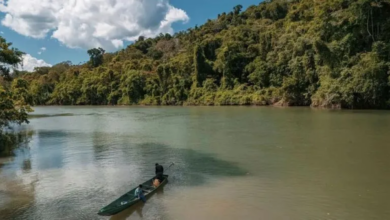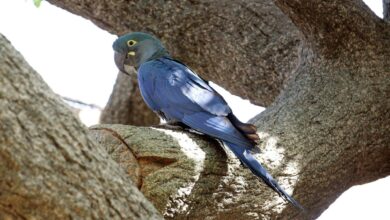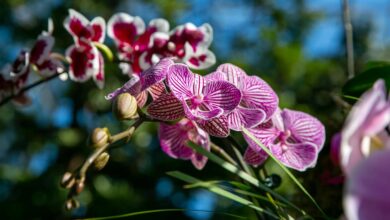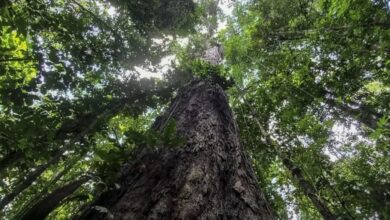New Porcupine Discovery Expands Colombia Wildlife Frontiers Dramatically
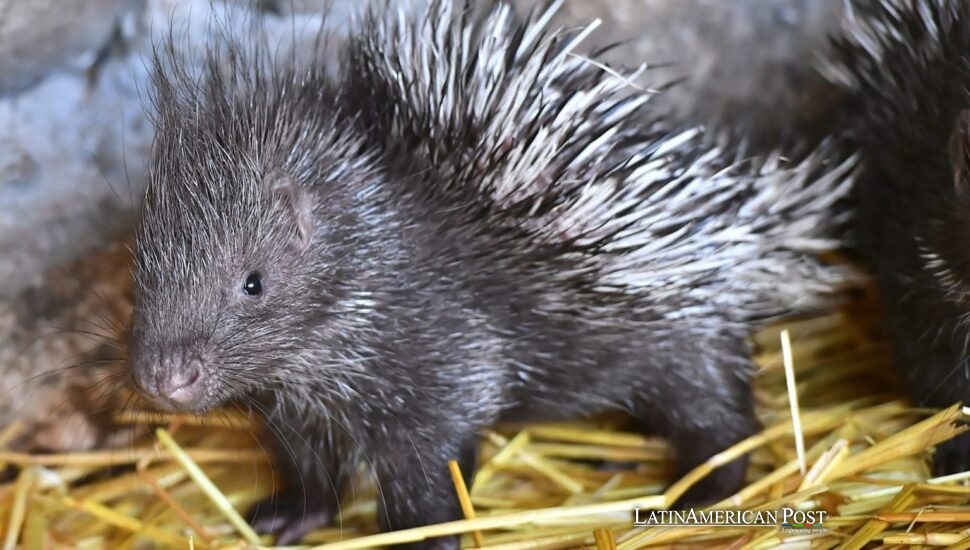
A 126-year gap in discovering a new porcupine species in Colombia has finally ended with the identification of Coendou vossi. This remarkable find highlights the diversity of the Andean nation and underscores the need for ongoing research and conservation.
A Historic Breakthrough in Andean Mammal Studies
Scientists discovered a new porcupine species in Colombia, a nation celebrated for rich plant or animal varieties. This finding proves more significant than a mere scientific record. The discovery also illustrates the extensive – and not yet researched – biodiversity in Colombian habitats. Known as Coendou vossi, this small, long-tailed porcupine has joined the ranks of endemic mammals in the Andean territory, surprising researchers and wildlife enthusiasts alike. The find is particularly noteworthy because it marks the first time in 126 years that a porcupine bearing a Colombian-type locality has been discovered scientifically identified in Colombia as its primary reference region.
Porcupines are generally elusive creatures. They inhabit hidden pockets of forests, often adapting to treetops or thick vegetation, making them hard to study. While Colombia is consistently recognized as one of the world’s most biologically diverse nations—hosting countless species of birds, amphibians, insects, and plants—significant mammal discoveries can be relatively rare, particularly among well-known groups such as porcupines. The latest discovery caught the attention of zoologists, ecologists, and experts in conservation studies, and it sparked new talks about national dedication to protecting nature’s treasures.
More than 100 years passed since Colombia named its last “type locality” porcupine, but scientific research never stopped. Large-scale environmental changes and expansions of agricultural frontiers have prompted numerous investigations aimed at cataloging local fauna. However, the distinct morphological traits, genetic differences, and geographic distribution of the Coendou genus—tree-dwelling herbivores recognized for their quills—indicate much to learn about these mammals. Coendou vossi, now officially recognized as endemic to Colombia, helps bridge these knowledge gaps and highlights the complexities of Andean and Caribbean ecosystems.
Over the last two decades, Colombia has significantly expanded its network of protected areas, research stations, and environmental monitoring programs. Yet the presence of detailed records, along with countless specialists across the nation, does not prevent unexpected findings. The discovery of Coendou vossi shows that new species exist in extensively researched regions when scientists use proper methods plus dedicate time to observation. The findings illustrate how nature conceals its secrets. A methodical approach to research or ongoing fieldwork brings these creatures into light – even in our highly connected age.
Tracing the Journey to Coendou vossi
The search that led to identifying Coendou fossil dates back to 2018 when a team of scientists launched a review of porcupine populations throughout Colombia. Initially, their focus centered on Coendou quichua, a species known—or at least presumed—to range widely across Panama, Ecuador, and Colombia. As they began analyzing specimens and consulting museum collections from the United States, the United Kingdom, Sweden, and various Colombian institutions, subtle discrepancies emerged. Certain porcupines from the country’s Caribbean forest and the inter-Andean valley of the Magdalena River differed in key morphological traits from those of Coendou Quichua found in the Ecuadorian Andes or Panamanian forests.
This divergence was first noted visually in aspects like body size, color patterns, and especially the comparative length of the tail. Yet visual observations alone would not have sufficed to confirm the discovery of a new species. Researchers carried out DNA analyses, morphological assessments, and biogeographical comparisons to rule out the possibility of local variations or subspecies. The results pointed decisively to a distinct taxonomic entity: the newly designated Coendou vossi.
A critical part of taxonomic work involves ensuring that any new species is novel rather than a previously described one. Thus, the scientists ran comparisons against Coendou Quichua and other close relatives across the Americas. Species like Coendou longicaudatus (the Brazilian “long-tailed porcupine”) and Coendou pruinosus (commonly referred to as the “carirosado porcupine”) were carefully evaluated. In addition, reports of similar creatures in Brazil, Peru, and Panama were analyzed to determine whether Coendou vossi might be a regional variation. The conclusion is clear: Colombia’s specimens exhibit distinct characteristics that separate them from others, proving that Coendou vossi exists only in Colombia.
A significant discovery awaits biogeographers who study species distribution patterns and evolution across territories. Colombia bridges Central and South America, where high mountain ranges create countless small habitats. The natural landscape has produced remarkable species development, with numerous varieties of frogs, toads, birds, and a vast number of insects. Colombia’s Coendou vossi adds to the evidence that mammals, too, can exhibit striking endemism in response to the dramatic environmental contrasts present across the country—from the Caribbean coast’s dry forests to the lush Andean cloud forests, all the way to the Amazonian expanses. Each region imposes unique evolutionary pressures that subtly and profoundly mold species.
Unraveling the Unique Characteristics
A remarkable distinction of Coendou vossi is its size. Although smaller than some of its close relatives, its tail appears proportionally longer. This feature may correlate with its behavior, assisting in arboreal movement and foraging in the semi-dry or dry forest habitats that dot the Caribbean coast and the inter-Andean valleys. Porcupines are not universally recognized for swift locomotion, relying instead on their quills for defense. Yet the tail could facilitate better balance or allow them to cling to branches as they feed or traverse thick undergrowth.
Researchers compared Coendou vossi with other porcupines in Colombia to place it into context. Among these are Coendou longicaudatus (the “long-tailed porcupine”), Coendou pruinosus (the “carirosado porcupine”), Coendou rothschildi (sometimes referred to as the “Panamanian porcupine”), and Coendou ichillus (the “small hedgehog” in colloquial terms). Each species has subtle traits adapted to its habitat, whether the canopy of a humid rainforest or a more arid, scrub-like environment.
Coendou vossi differs from other species in appearance along with its behavior, which raises questions about survival strategies, food choices or mating patterns. A species native to specific areas often develops in small territories, which creates distinct genetic groups adapted to their surroundings. Scientists want to understand if the porcupine’s fur or spine colors vary across different regions. The researchers must study how C. vossi adapts to locations with dry periods and rain cycles.
The discovery of this porcupine reveals an urgent need for habitat protection. City growth, as well as farming, threaten most areas where it lives. The Caribbean dry forests rank among Colombia’s’ most endangered natural areas because of extensive land changes for agriculture or mining. A newly found mammal brings attention to these ecosystems, which lets conservationists highlight the need to protect such significant natural spaces. Protecting Coendou vossi requires maintaining the connectivity and ecological integrity of the forests where it has evolved, ensuring that other species that share these habitats can also persist.
It is possible that this new porcupine could serve as an umbrella species—organisms used in conservation planning whose protection can indirectly preserve a host of other species and ecological interactions. If well-managed conservation programs protect the range of Coendou vossi, the results could also secure key wildlife corridors and resources for many different animals, from birds to amphibians. Recognizing new mammal species creates excitement in science and prompts action to protect nature in areas with previously unnoticed animal life.
Future Perspectives and Conservation
The finding of Coendou vossi has reverberated among academic circles, government institutions, and local communities in Colombia. Scientific discovery can serve as an inspirational narrative in a nation that has faced challenges ranging from armed conflict to rapid economic change. The discovery of new species extends far past academic recognition. Such findings demonstrate the nation’s exceptional biological treasures attract nature tourists, scientists, plus researchers – and build national pride among citizens.
A major task remains: to protect the natural home of Coendou vossi. Dry forests are frequently overlooked in comparison to lush rainforests when it comes to conservation funding. Yet the unique ecological processes and species that dwell in dry forests equally deserve attention. A newly identified porcupine species native to the region creates momentum for environmental protection. Conservation groups and government officials use such findings to request additional safeguarded zones or establish fresh reserves, particularly in areas that connect diverse wildlife habitats.
Meanwhile, residents in regions with Coendou vossi might also benefit from responsible ecotourism. When correctly managed, wildlife-oriented tourism can create incentives for maintaining habitat quality. Porcupine sightings attract curious people who generate income for “local areas.” This fact proves that species diversity offers more than scientific value or just aids sustainable growth. However, the balance between tourist visits and nature protection needs a proper strategy to prevent excessive disturbance of animal habitats.
The discovery of Coendou vossi tells researchers that Colombia still holds many unknown species. The Colombian territory spans from the Sierra Nevada de Santa Marta through the Chocó rainforest to the Amazon basin, forming distinct ecological zones. DNA analysis, hidden cameras, and satellite imagery assist researchers in tracking elusive species. A primary challenge is obtaining funds or establishing collaboration to broaden field studies. Teams from universities, conservation NGOs, government bodies, plus community organizations support this scientific endeavor.
The results demonstrate the value of museum collections and cross-border partnerships. Scientists examine preserved specimens across international facilities to trace species evolution. The Coendou vossi study illustrates how significant morphological and genetic disparities can be overlooked when specimens remain understudied in storage. By revisiting historical collections with modern technologies, scientists can unearth leads for identifying entirely new species, thus rewriting the narrative of biodiversity in many parts of the world.
Recognizing Coendou vossi as a separate species affects multiple areas of science. Studies of this porcupine reveal details about population patterns through different periods. The findings also help experts understand past relationships among Colombian habitats. Researchers examining the animal’s evolution uncover specific links between geographic regions. Understanding genetic variability in such localized populations can inform broader debates about species adaptation to climate change, habitat fragmentation, and human encroachment. Ultimately, each new species described contributes a piece to the wider porcupine’s life, diversifying and persevering in the face of environmental challenges.
The discovery of Coendou Rossi adds to Colombia’s rich collection of mammals and scientific knowledge. This small porcupine’s tail extends further than its relatives, making it remarkable. Its late classification—126 years after scientists recorded the previous specimen—proves that Colombia’s Andes still possess many hidden animals.
Discoveries spark joy but need safeguards. Scientists who find fresh species must add them to existing conservation plans alone, which proves insufficient—research teams need to examine, track, and defend these life forms. If Coendou vossi can inspire stronger preservation of Colombian dry forests and inter-Andean valleys, its influence will extend well beyond taxonomic journals. The discovery brings new attention to Colombia’s extraordinary landscapes along with a fresh resolve to protect these ecological treasures.
Also Read: Brazil’s Atlantic Forest Reveals Legendary Tapir’s Historic Return
The findings bring new research paths about Coendou species and other mammals without proper studies. Scientific progress blurs the boundaries between identified or unknown creatures. A fundamental question emerges: How many additional species still exist without documentation? The newly found Coendou vossi demonstrates the rich diversity of life forms. It reminds scientists that even after 200+ years of research, nature keeps secrets hidden in common places. With each discovery, the call for a sustainable coexistence with our environment grows loud, scoring the reality that the fate of these remarkable creatures is interwoven with our own.

